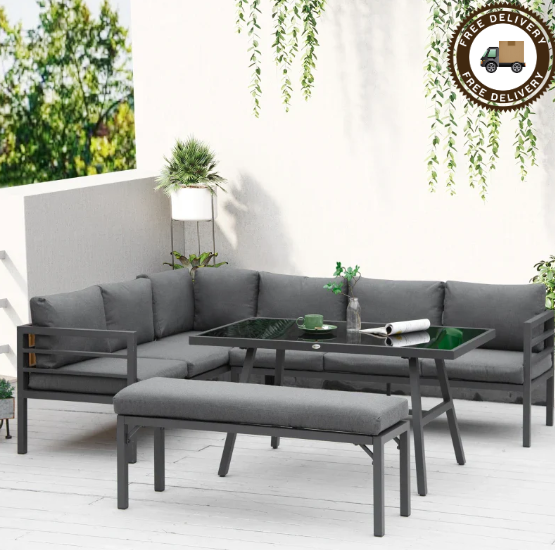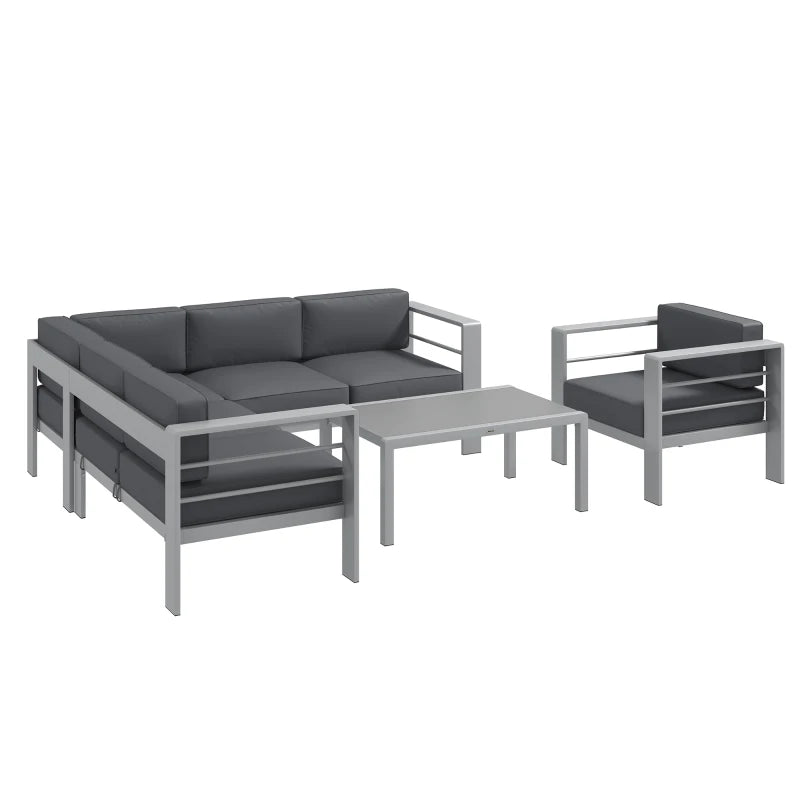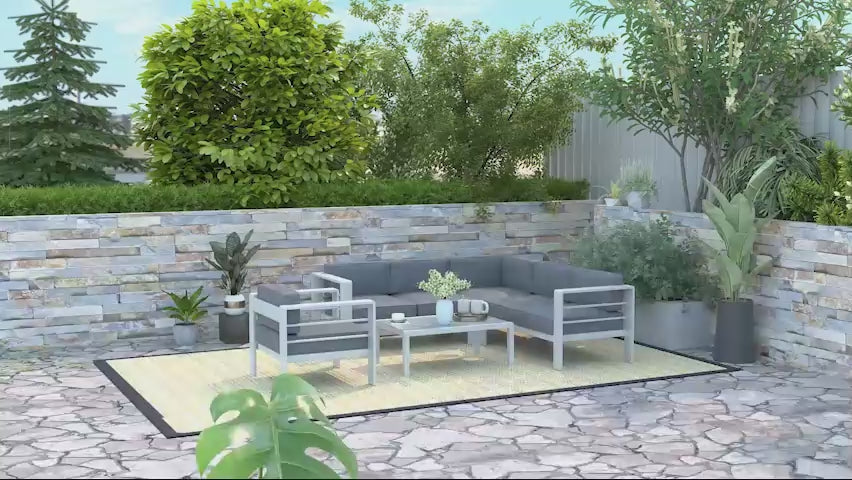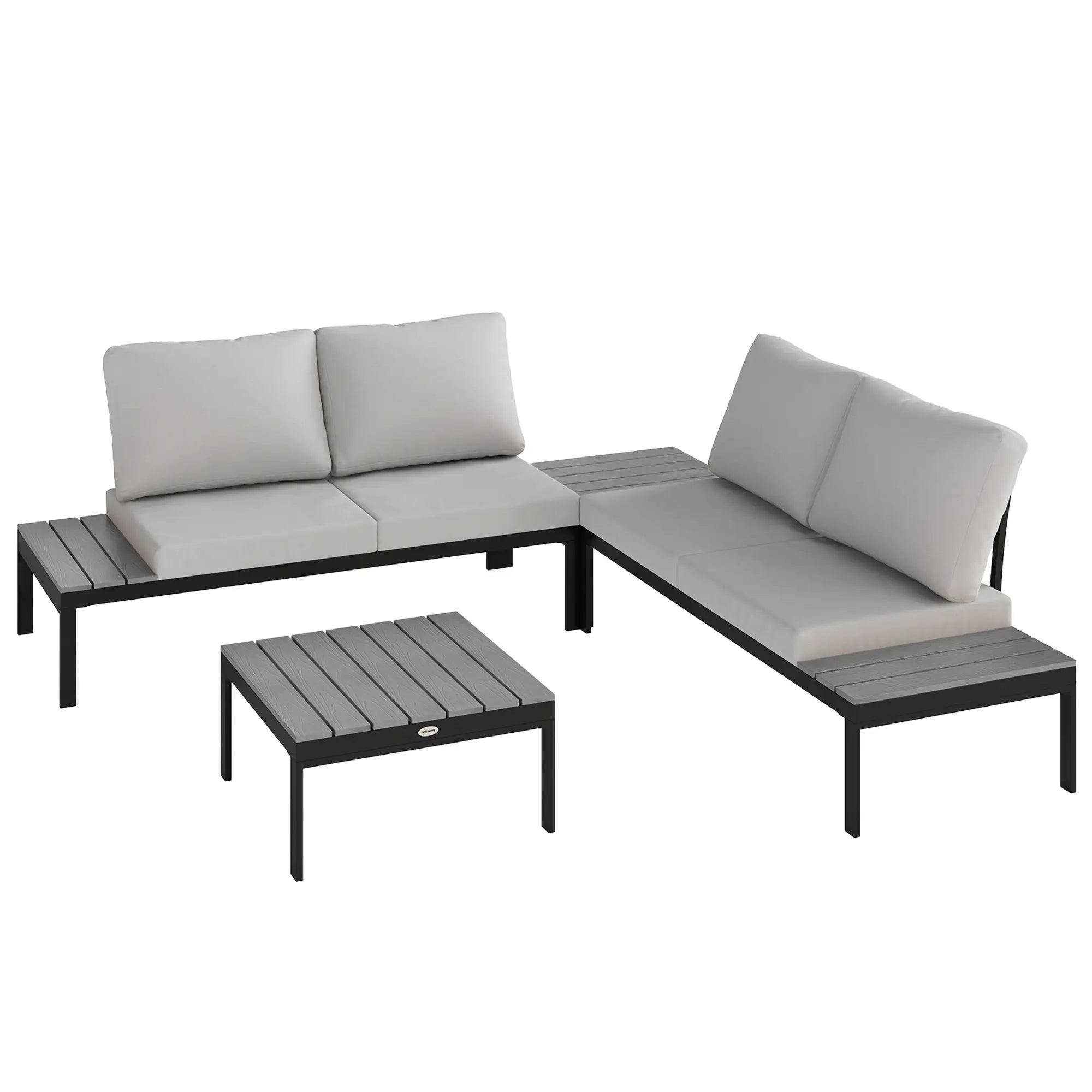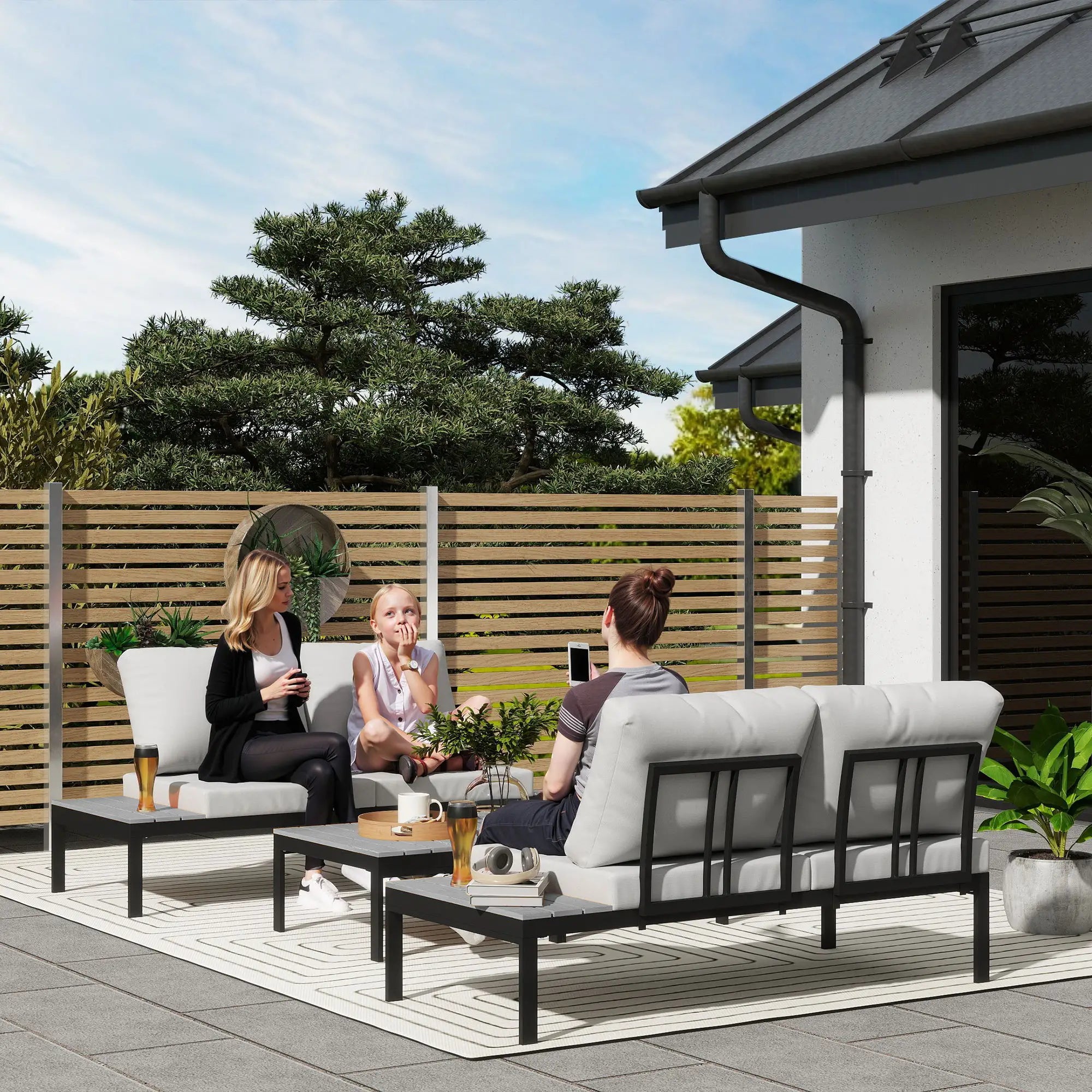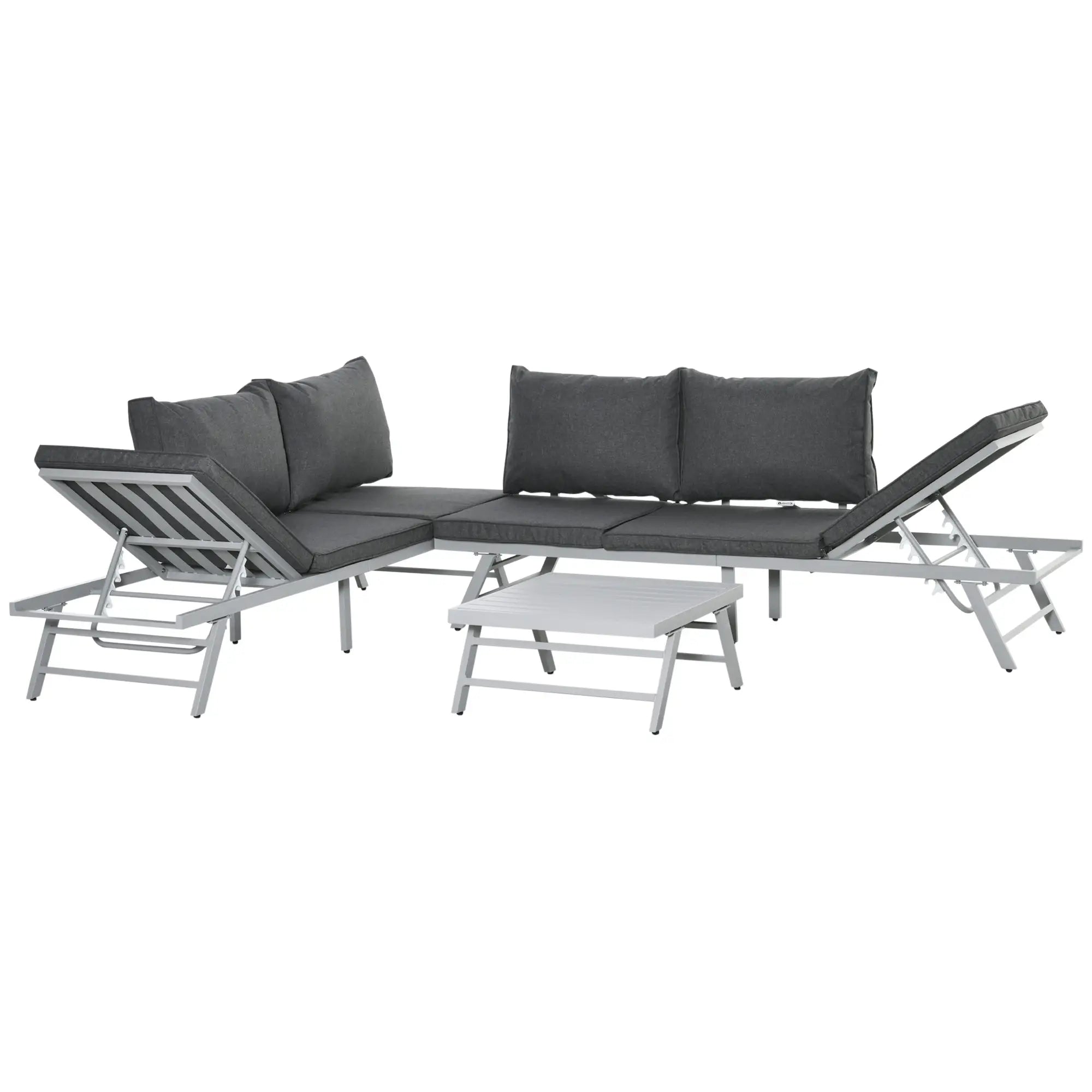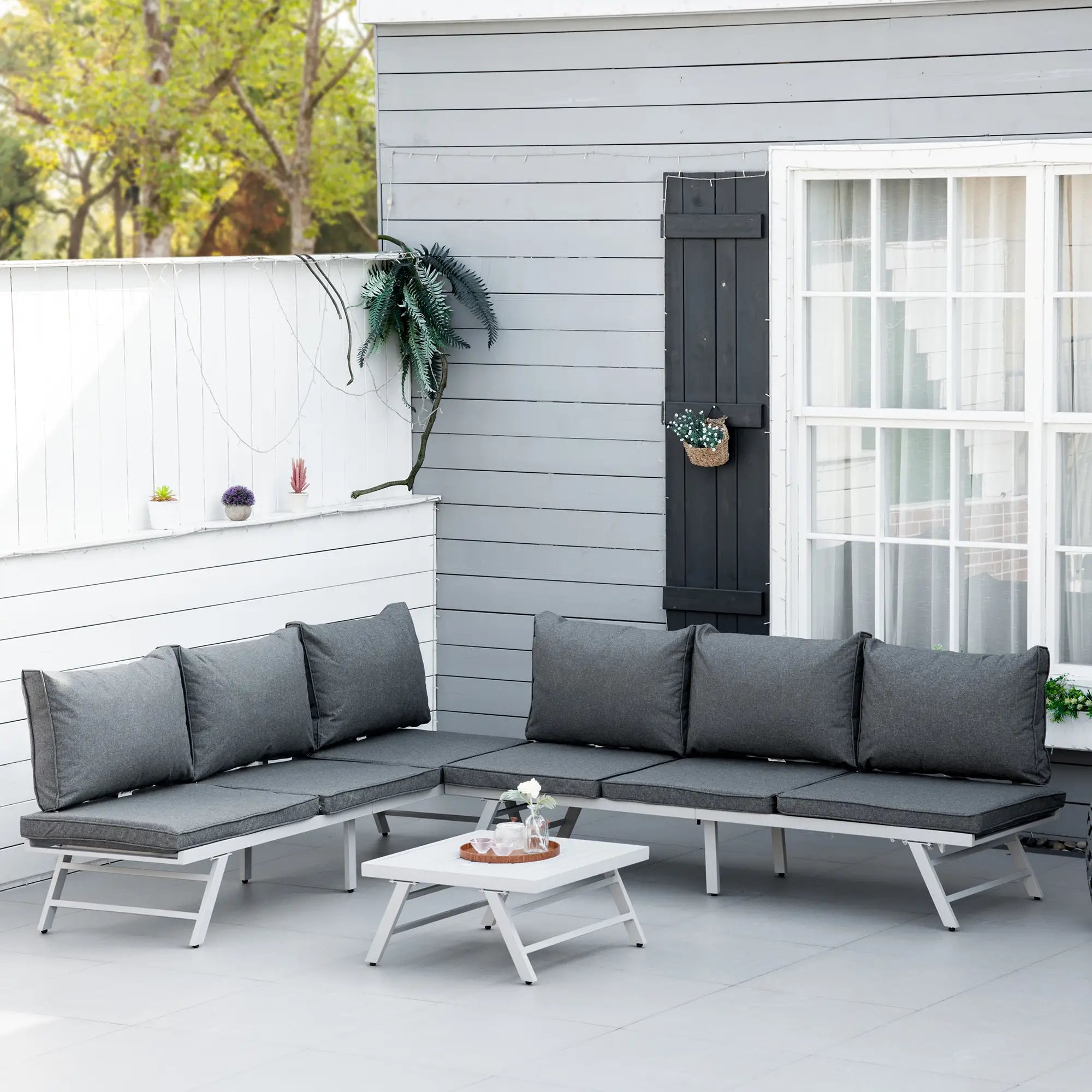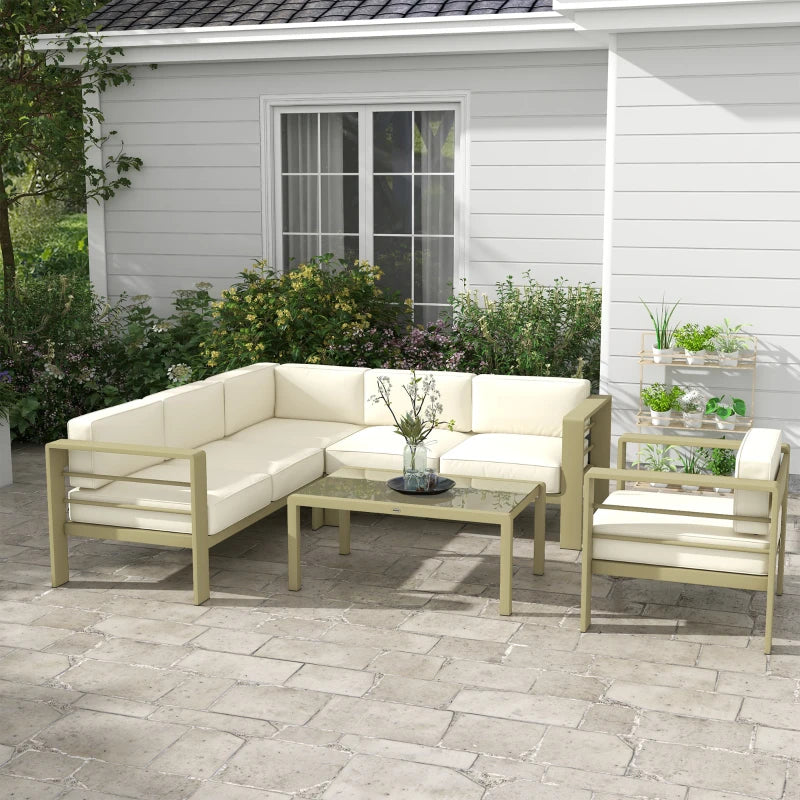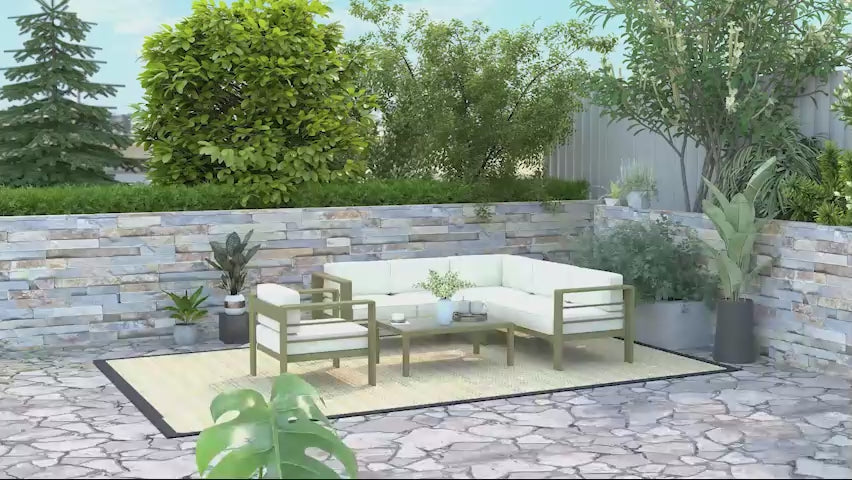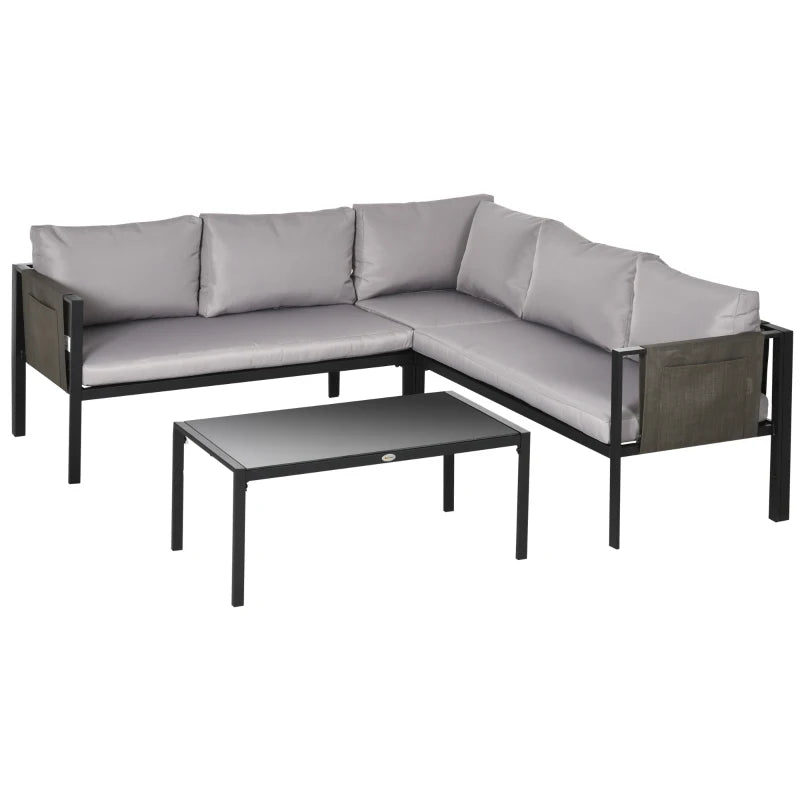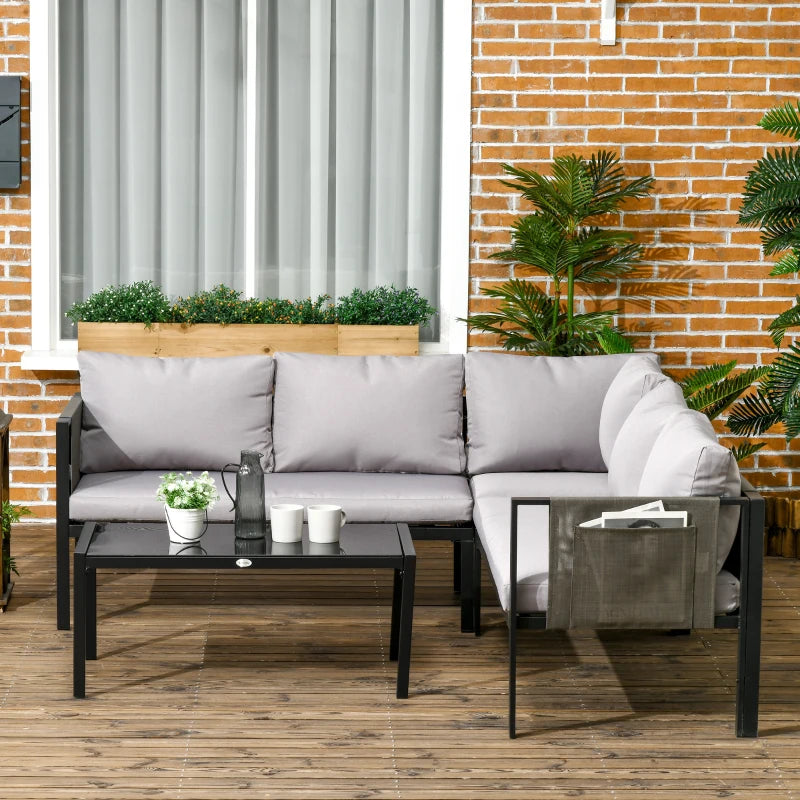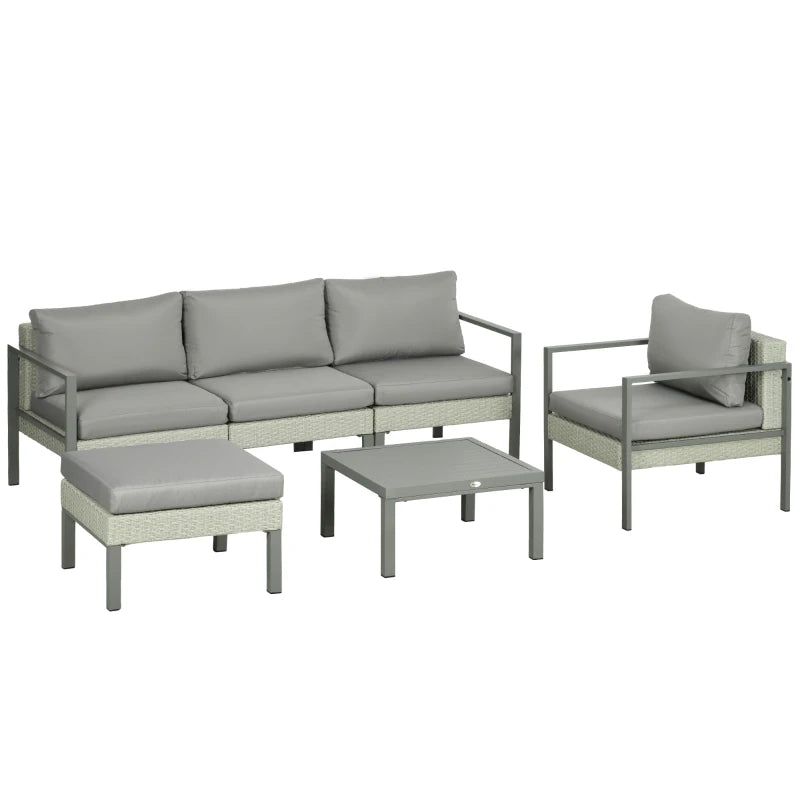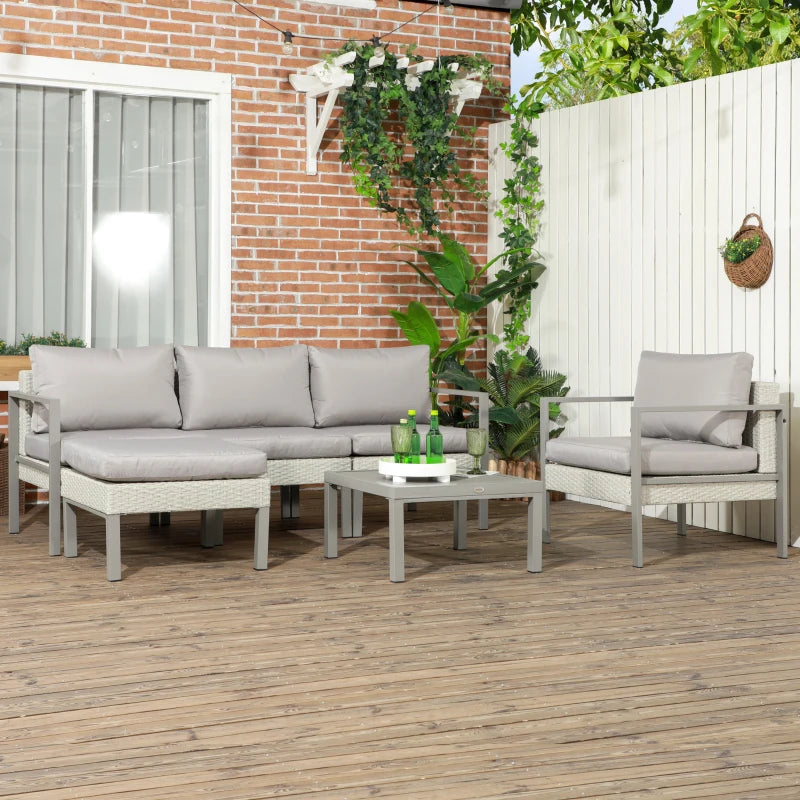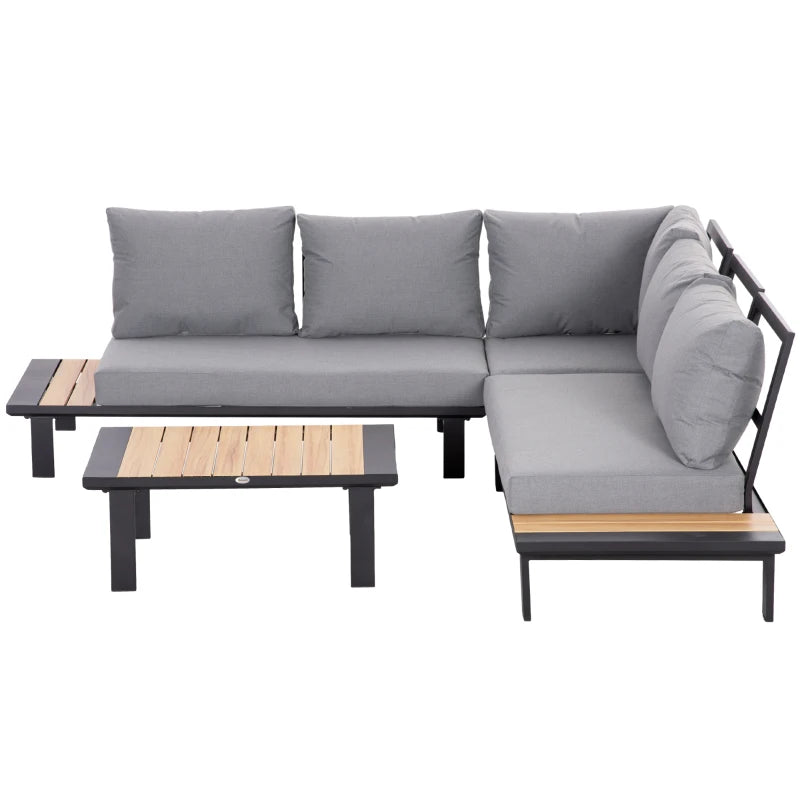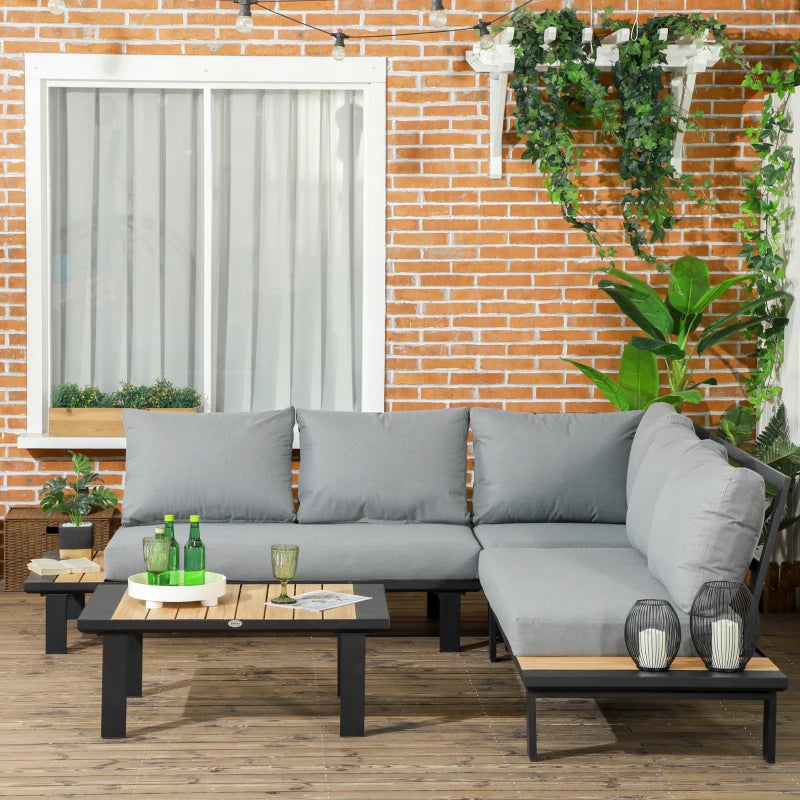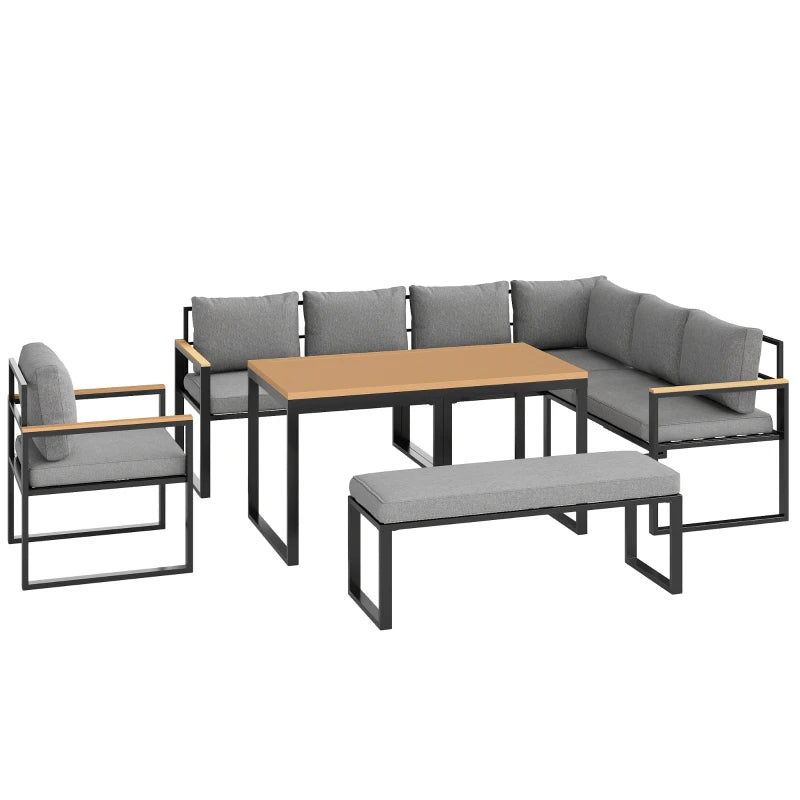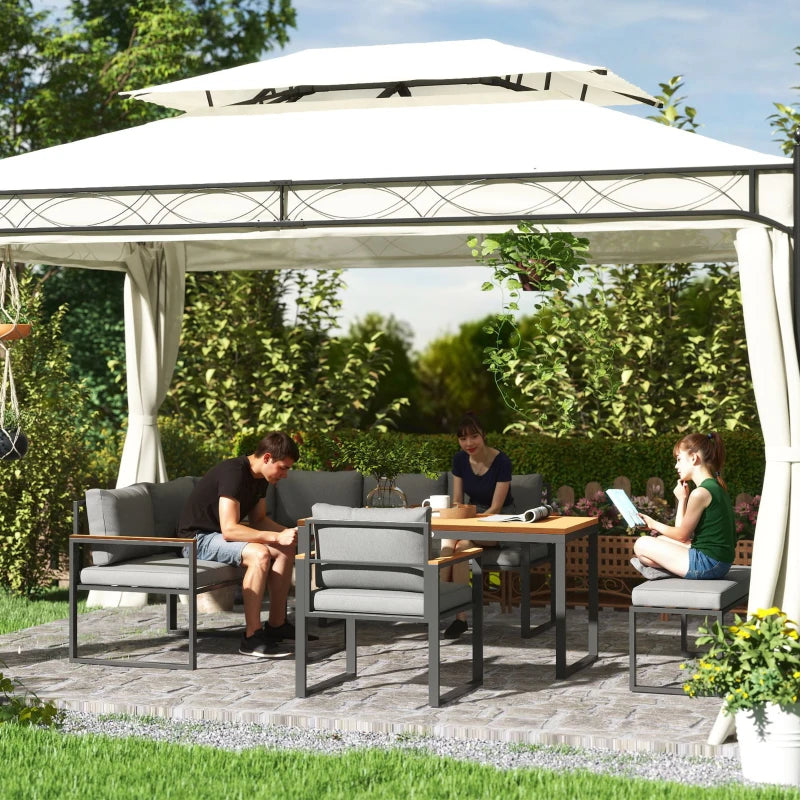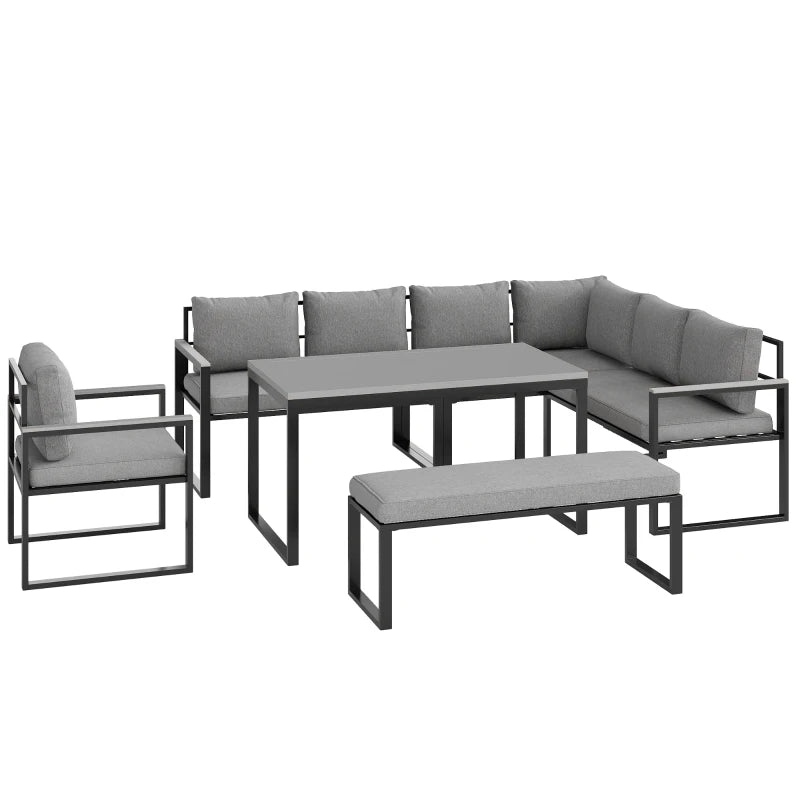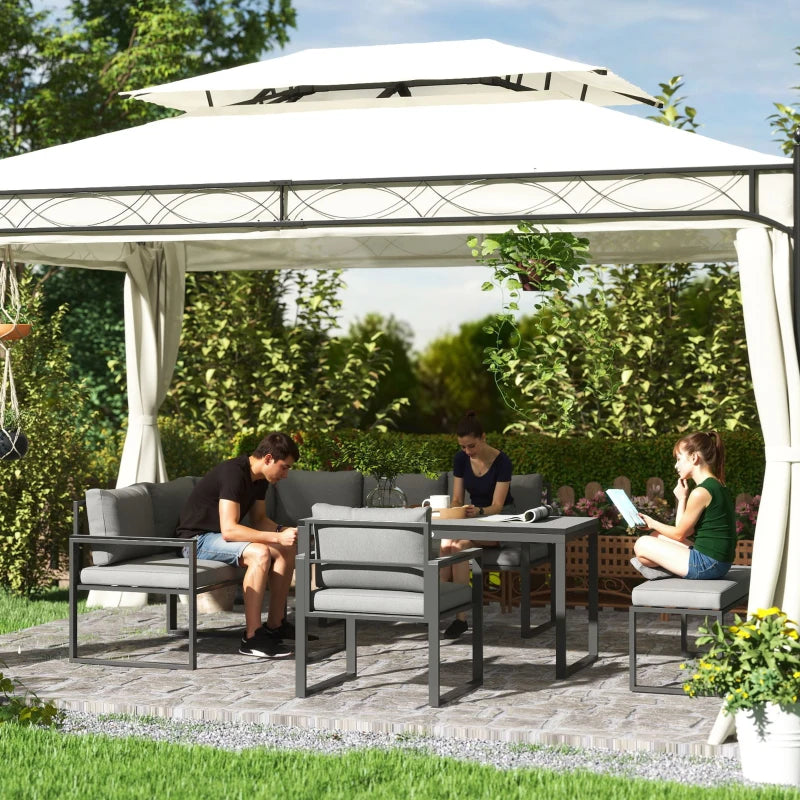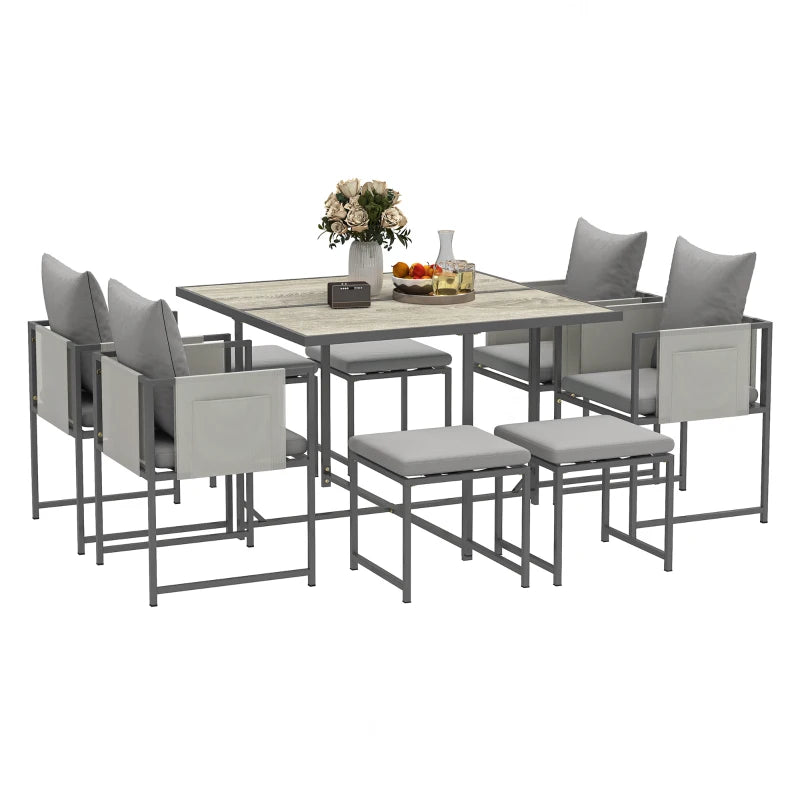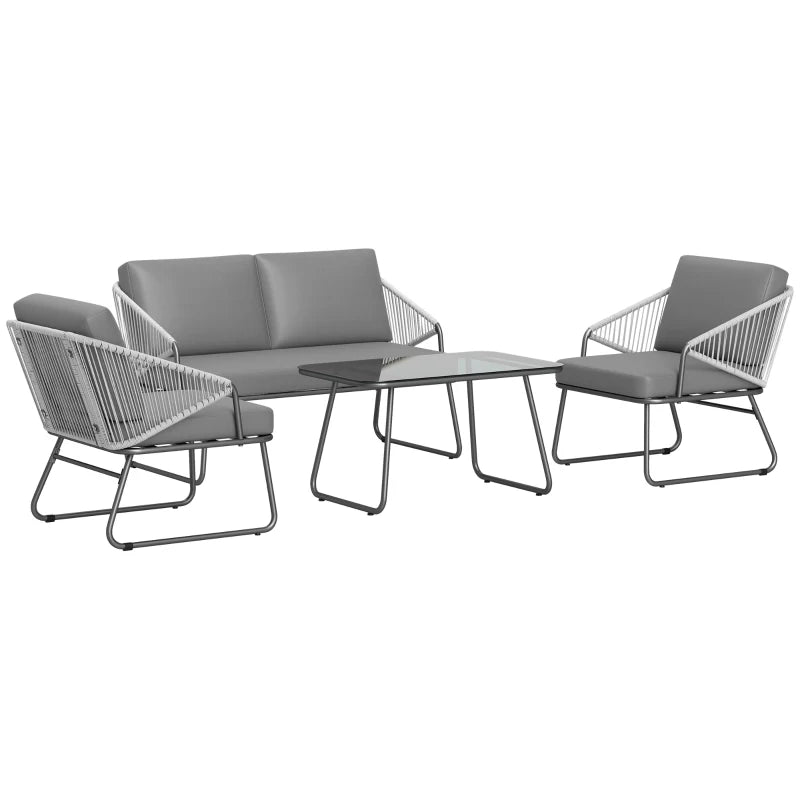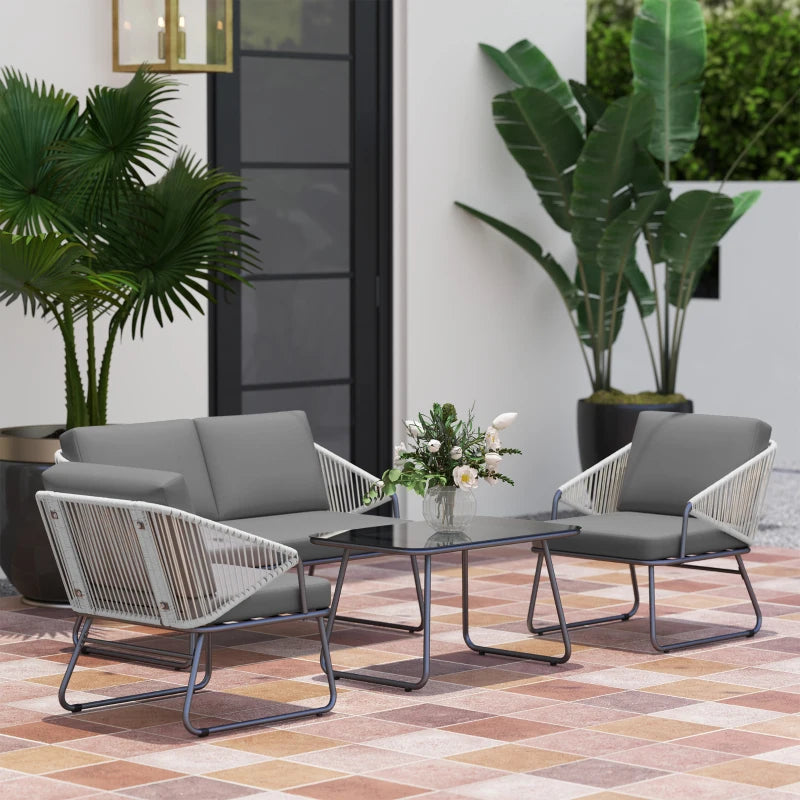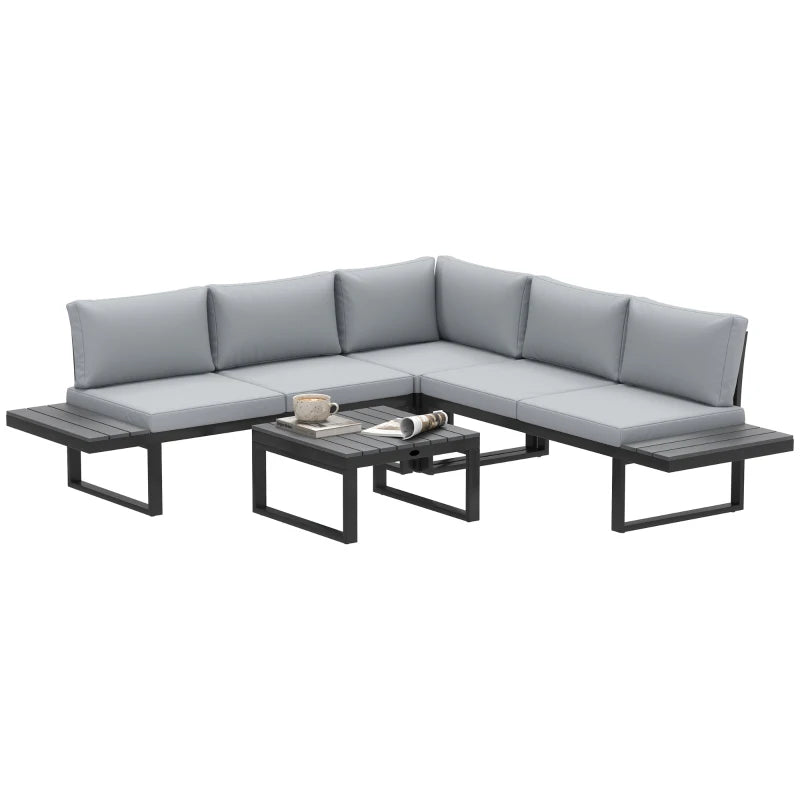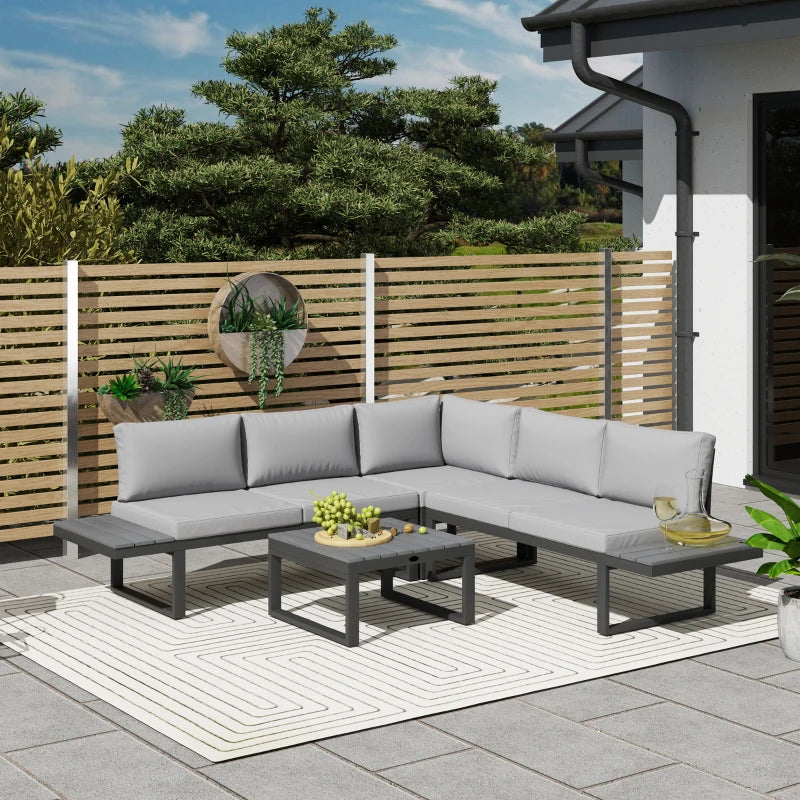Adding metal garden furniture to your back garden is a great way to enhance its beauty.
However, maintaining aluminium and other metal furniture can be challenging, especially in wet climates like in the UK!
Rust can quickly develop, but don't worry—removing rust is not as hard as it seems.
With some time and a few household items, you can restore your metal furniture to its former glory. This guide will show you how to remove rust from metal umbrellas, table frames, chairs, and other types of furniture using simple DIY methods.
DIY Methods to Remove Rust from Metal Patio Furniture
These methods work on stainless steel, wrought iron, cast iron, and other metals, regardless of the severity of rust build-up.
1. White Vinegar
White vinegar is a stable and safe cleaning agent due to its acetic acid content. It dissolves rust efficiently, reducing the need for excessive sanding. Vinegar also has antimicrobial properties for a thorough clean.
Process:
- Rinse the affected area with vinegar: Use a spray bottle or cloth to apply white vinegar directly to the rusted areas.
- Add salt if the surface is heavily soiled: For tougher rust spots, sprinkle salt over the vinegar-soaked area.
- Let it sit for 10 to 15 minutes: Allow the vinegar (and salt, if used) to penetrate the rust.
- Gently scrub with steel wool or a metal bristle brush: Use gentle pressure to scrub away the rust.
- Rinse the area with plenty of water and let it dry: Ensure all vinegar is washed off to prevent further corrosion.
Key Takeaway: 🔧 White vinegar is an effective, safe, and readily available option for rust removal, making it an excellent choice for routine maintenance.
2. Baking Soda
Baking soda, an alkaline solution, helps reverse the oxidation process behind rusting, allowing you to remove rust without exposing the surface to hazardous chemicals.
Process:
- Prepare a baking soda and water paste for moderate rust levels: Mix baking soda with water until it forms a thick paste.
- Use hydrogen peroxide instead of water for severe rust: For more stubborn rust, substitute hydrogen peroxide for water to create the paste.
- Apply the thick paste to the affected surface: Spread the paste evenly over the rusted areas.
- Allow the paste to sit for no more than 20 minutes: Let the paste work on the rust.
- Scrub with an abrasive scrubber like sandpaper or a bristle brush: Scrub away the paste and rust.
- Repeat if necessary: If rust remains, reapply the paste and scrub again.
Key Takeaway: 🔧 Baking soda is a versatile and safe rust remover, perfect for tackling different levels of rust severity.
3. Coca-Cola
As a carbonated drink, Coca-Cola contains properties that dissolve metal oxide (rust). Surprising I know! It works best on flat surfaces but is less cost-effective than other methods.
Process:
- Pour Coca-Cola on the affected area: Ensure the rusted area is fully covered with Coca-Cola.
- Let it sit for a while: Allow the cola to sit for at least an hour.
- Scrub with a sponge or hand towel: Use a sponge or cloth to scrub away the rust.
- Rinse off with plenty of water: Wash away the cola residue thoroughly.
Key Takeaway: 🔧 Coca-Cola is an unconventional yet effective method for rust removal, particularly suitable for small or flat areas.
4. A Potato
Potatoes are rich in starch and oxalic acid, making them effective for rust removal, believe it or not.
Process:
- Cut the potato in half: Ensure a clean, flat surface for scrubbing.
- Add dish soap or salt to the potato: Sprinkle salt or dish soap onto the cut side of the potato.
- Scrub the affected surface with the potato: Use the potato to scrub the rusted area.
- Let the mixture sit for 1-2 minutes: Allow the potato’s natural acids to work on the rust.
- Wipe off any loosened rust: Use a cloth to clean the area.
Key Takeaway: 🔧 Using a potato is a natural, eco-friendly method for rust removal that leverages the natural acids found in common household vegetables.
5. Aluminium Foil
Aluminium foil can help seal in the freshness of more than your leftovers. It also works as an excellent DIY rust remover for your iron patio furniture.
Process:
- Mix salt into some warm water in a bowl: This creates a mild abrasive solution.
- Roll the aluminium foil into a ball: Form a manageable size for scrubbing.
- Dip the aluminium ball into the saltwater mix: Ensure it’s well-soaked.
- Scrub the affected surface to clean off the rust: Use the aluminium ball to scrub away the rust.
- Rinse the surface and repeat the procedure until you get the desired results: Wash off the saltwater and check for remaining rust.
Advanced Methods for Rust Removal
While DIY methods can be highly effective, sometimes more aggressive approaches are necessary for stubborn rust. Let’s explore some advanced techniques for removing rust from metal patio furniture.
Grinding Rust Off with Power Tools
Using power tools like rotary drills, sanders, and angle grinders can help remove severe rust quickly.
However, this method also removes any paint beneath the rusty layers, so you’ll need to repaint afterward.
Process:
- Safety first: Wear goggles, a dust mask, gloves, and protective clothing to avoid injury.
- Use a grinder for larger surfaces: Gently apply the grinder to remove rust from large, flat areas.
- Use sanders for crevices: Sanders are ideal for reaching into small, hard-to-access spots.
- Smooth the surface: After removing rust, use a 400-grit wet or dry sandpaper to smooth the metal surface.
Key Takeaway: 🔧 Power tools offer a fast and efficient way to remove heavy rust but require caution and preparation to avoid damage and ensure safety.
Rust Converter
A rust converter is a synthetic polymer formulation that converts rust (iron oxide) into a black paintable surface. It acts as both a rust remover and a primer.
Process:
- Prepare the surface: Use a wire brush or steel wool to remove flaky paint and loose rust.
- Apply the rust converter: Use a fine nylon brush or sponge to coat the rusted area with the converter.
- Let it dry: Allow the converter to dry completely before repainting.
Key Takeaway: 🔧 Rust converters are an efficient, dual-purpose solution for treating rust and preparing the surface for painting.
Using WD‑40® as a Rust Remover
WD‑40® is a versatile tool that can penetrate rust and make it easier to remove. It also provides a protective layer to prevent future rust.
Process:
- Clean the surface: Remove dirt with soap and water, then dry thoroughly.
- Spray WD‑40® on the rusted area: Ensure complete coverage of the rusted spots.
- Let it sit for 10 minutes: Allow the WD‑40® to penetrate and weaken the rust.
- Scrub with a stiff brush: Remove the loosened rust particles.
- Wipe clean: Ensure all rust and WD‑40® residue is removed.
Key Takeaway: 🔧 WD‑40® is a handy tool for both removing rust and protecting metal surfaces from future corrosion.
How to Protect Outdoor Metal Furniture from Rust
Eradicating rust is crucial, but preventing it from reoccurring is even more important. Here are some effective ways to protect your outdoor metal furniture from rust.
Preventive Measures:
- Cover your furniture: Use a tarp or rain cover when not in use, especially during wet months.
- Store indoors if possible: Keep your furniture inside your home or garage to avoid moisture exposure.
- Wipe wet surfaces: Immediately dry any water from your furniture to prevent rust.
- Apply a protective layer: Use grease, oil, or paste wax as a water repellent.
- Regular cleaning: Include your patio furniture in your spring cleaning routine, paying attention to every surface, crack, and crevice.
Key Takeaway: 🔧 Regular maintenance and preventive measures are essential to keep your metal patio furniture rust-free and looking new for longer.
Closing Thoughts
Removing rust from metal patio furniture is manageable with the right methods and tools. Whether you use household items like vinegar and baking soda or more advanced techniques like power tools and rust converters, you can restore your furniture’s beauty and functionality.
Regular maintenance and preventive measures are key to keeping your outdoor metal furniture in pristine condition.
Try these methods and enjoy a rust-free patio set that enhances your outdoor living space.
Explore more:
- For more outdoor furniture ideas, check out our patio reveal and learn how to create an outdoor living and dining room on a budget.
- Need help choosing the right colors for your projects? Download our free guide, How To Choose The Right Paint Colour Every Time, to avoid any color mishaps.

